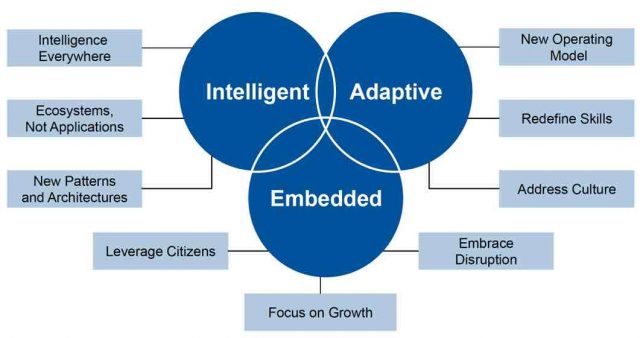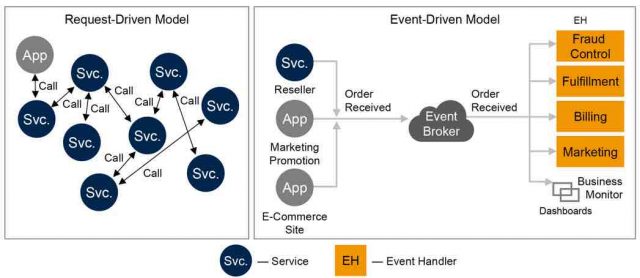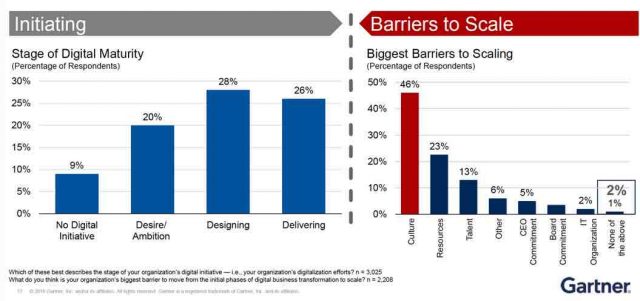Dennis Gaughan highlighted that, like everything else, how we think of applications will change dramatically. They don’t go away but the embedded intelligence and the way we develop them must change to keep up with the pace of change.
What’s changing:
- Changing Markets
- Every industry is seeing change as they digitally transform
- Companies that you work with are evolving
- Changing People
- DemographicsL Many are getting ready to retire. The new workers were born with an iphone in their hand.
- Behavior
- New Enterprise Strategies:
- New platforms and products
- new ecosystems and partners
- New Political / Economic Conditions
- Regulations (GDPR anyone?)
- Political instability
Quote: Your job as an application leader may go away or at least be redefined
The need for people who deliver applications will always be there but that capability will be embedded in the DNA of the organization.
In essence, Apps are changing in three ways. This is what will help them (and you) remain relevant.
- Intelligent: How do you exploit the intelligence available now. How do you leverage new patterns and architectures to manifest itself.
- Adaptive: How do you change your approach to the delivery of services. This involves skills profile changes, and about addressing culture
- Embedded: How do you ensure this is embedded in your organization. This is more than just IT. You have to change the mindset of reduce cost to lever for growth.
Intelligent
Start with Artificial Intelligence. This is the hot topic. Companies embed this throughout their organizations. The big question is how to leverage these tools.
- How do you support the data scientists?
- How do you engage citizen data scientists?
- How do you augment and embed what they learn.
You need to ensure that there people collaborate. Convergence of these scientists and citizen scientists will continue.
Quote: You can teach an old doc new tricks. (think Oracle, IBM, Microsoft, SAP, Salesforce, and Workday)
You can use embedded AI to improve the way your organization works.
Example: apply algorithms to match up PO and invoices
Question: Will you choose your primary application vendor to be the key AI Platform? The answer to this depends on your needs, what ecosystem vendors bring, and whether you will embed AI or if your partner embeds it. (Porter note: Oracle and Salesforce choose to embed it for you. IBM and Microsoft are doing it as well but are also building out generic AI services.)
Example: Use virtual assistants and health measurements via Apple Watch to engage patients. Note that this is about solving a specific business problem. You need to take the same approach.
As you do so, you need to ensure all the experiences across all your channels come together. Gartner refers to this as Multi-experience development. In other words, your app is not just a web app. It’s a web, conversation, mobile app.
This is going to drive change in how you architect the applications from request to event driven apps. Things like deployment of IoT sensors will drive the event driven model.
Prediction: 20 billion physical things become connected to the internet, a new form of economics will alter the way businesses invest in new products, physical assets, information technologies and people.
This will change both your application portfolio and the scope of it. As you evolve your strategies, you’ll shift focus to platforms and ecosystems. Think of it as your digital technology platform.
Adaptive
You will have a few key imperatives in a new operating model.
- It’s products over projects.
- It doesn’t end
- Change the way you engage with business stakeholders
- It incorporates continuous delivery. Think DevOps
- Customer centric design becomes the focus
- Built on next generation building blocks.
- cloud based infrastructure
- modular building blocks
- Shift away from heavy governance and focus on strategy
- Note: I agree with the idea that heavy governance isn’t needed but governance of data in this data rich world has become more important.
- Data Strategy over ownership
- Adaptive skills and mindset. How do you change?
Fact: 73% of organizations will adopt the product model by the end of 2018.
This means you have to build teams on Agile constructs. You will have new or modified roles
- Product Manager
- Offering Manager
- Product team
- apps, integration, information, business product owners, stakeholders, design
- this is a multi-disciplinary team. Each members sees and understands what the other team members are doing. Get out of the specialist silo
New skills based on Gartner survey
- 55% user experience dsigner
- 42% API product manager
- 41% chief analytics officer
- 35% digital risk manager
- 34% algorithm / model designer
There are a number of dials you can turn to adjust the culture. Think of it as culture hacking
- Tempo
- Value
- Direction: measure. fail fast
- Collaboration
Focus on change a little bit at a time.
Embedded
The third part of the story involves embedding this in your business. It starts by elevating IT perception and delivery.
Quote: They need to stop being the techies on the 10th floor
The good news, IT sees everything. You can make this change. So here are the steps:
- You understand what’s happening but IT needs to understand the business strategy.
- Gain a deep understanding of the business capabilities of the organzation.
- What’s foundational but doesn’t deliver competitive advantage
- What’s core to stratety
- Understand finance and money
- Not just budgets but also how the company makes money
- Understand how to apply technology
- This could be the last item rather than the first
Quote: Words matter. Think Shadow IT vs Citizen Innovation. One focuses on leveraging technology more effectively.
Quote: Leaders embrace growth, not just cost reduction
Recommendations
Dennis ended with some recommendations. They are part of pursuing a willful disruption model
- Offense: Innovation
- Defense: Competition
- Serendipity: Chance
- Self-Disruption: Reinvention
- Apple knew that introducing the iphone would cannibalize the ipod
- Destruction: Anarchistic
Embrace the idea of Continuous Next




